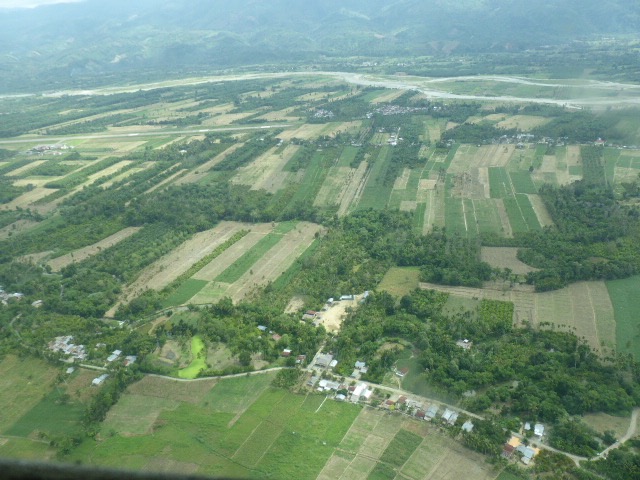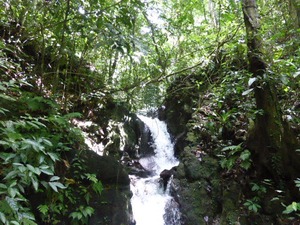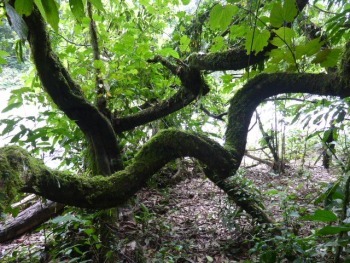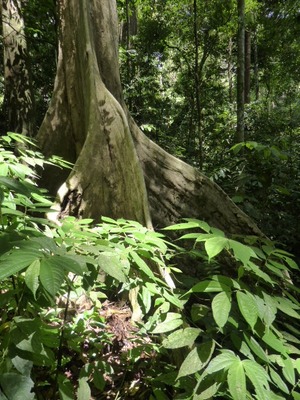Do we do justice to nature and to inquiring children in confining education to the classroom? Is it ethical to disrupt ancient forests, wildlife and their habitats with treks and tours for intellectual pursuits? What conflicts lie in eco-tourism and forest preservation? A troubled writer asks herself these questions as she explores the heart of the Leuser Ecosystem, Indonesia, with young students. Article and photos by Kayti Denham
Bali, 24 August 2016. After an arduous and extended journey of delays, technical problems and missed flight connections, I stumbled into a smoky Medan bar in the middle of Ramadan to be greeted with beer. What a relief!
Here in the esteemed company of some true leaders in worldwide environmental protection, people with victories under their belts and lifetime of experience, I sat to gather myself and enjoy the beer. But before a moment had passed a challenge was issued: “Why are you going to take a bunch of kids into the forest? Why not just leave the animals alone and watch a programme about them on TV?”
A good question, and one I did not answer on the spot but spent the next five days thinking about as I explored, in Ketambe, a small section of the last remaining forests of Northern Indonesia, the Leuser Ecosystem that straddles the borders of North Sumatra and Aceh Tengarra.
 Learning about nature at the Leuser Ecosystem that exists at tenuous crossroads.
Learning about nature at the Leuser Ecosystem that exists at tenuous crossroads.
To reach this part of the eco system you could either drive up a rough bumpy road for eight hours or fly Susi Air for 45 minutes. I was to try out both as my goal was to experience everything in advance of the party of students and to check out all the possibilities.
 The song of the waterfall entertains better than any CD!Susi Air is a small privately owned airline that was run by Ibu Susi Pudjiastuti until her appointment as the Minister of Marine Affairs and Fisheries in the current Indonesian government.
The song of the waterfall entertains better than any CD!Susi Air is a small privately owned airline that was run by Ibu Susi Pudjiastuti until her appointment as the Minister of Marine Affairs and Fisheries in the current Indonesian government.
Susi does a great job - four passengers and the two pilots got from Medan Airport into a clear sky with magnificent views on time. The plane was small and the view of the encroachment of man into the forest system is clearly etched out in the aerial view.
Then I was there, in the forest, and asking myself the same question: Why do we want to bring students here to this edge of nature where man’s imprint is harsh and damaging? Why is it so important that it is real? What if we just watched it on television?
As the arching trees swayed with the weight of a mother orangutan and her baby, as their orange fur no longer a blur shone in the sun, I watched silently, holding my breath. The mother swung her baby to the side and slipped from branch to branch… eventually out of sight.
 Learning how age-old trees support other forms of life in Leuser Ecosystem.As we walked through the soft paths littered with damp leaves and the moss carpeted branches of fallen boughs, I thought about the question and watched as a deer ran from our footfalls.
Learning how age-old trees support other forms of life in Leuser Ecosystem.As we walked through the soft paths littered with damp leaves and the moss carpeted branches of fallen boughs, I thought about the question and watched as a deer ran from our footfalls.
I gazed at the hollow shell of a mosquito eating plant, I stood within the furled trunks of a tree over a hundred years old, and I crept up beside orchids to sit by the rushing of a waterfall.
I paused at the sound of the hornbill’s wings beating on the air with a bass drum rhythm and heard with a smile the laugh of the Thomas Leaf Monkey before witnessing the deep black softness of the Siomay, or gibbon, as it broke through the canopy dropping split fruits to the forest floor.
I scrambled over roots that tangled into staircases that drew me along precipitous pathways to the steaming waters of the hot springs, which then mingled with the cool spring waters. Where they descended into shallow pools I sat and I asked myself the question: why don’t we just watch this on television?
 A walk in the forest and the knowledge that it brings surpasses any classroom's effort in teaching what is nature.Holding on to vines in descent, flashes of red plumage glimpsed in the tree tops. With the wave of the wind passing above us and the soft air dropping in temperature, we edged our way out of our first trek, the sun shifting against the horizon turning the evening sky into a spreading bruise… and I answered the question.
A walk in the forest and the knowledge that it brings surpasses any classroom's effort in teaching what is nature.Holding on to vines in descent, flashes of red plumage glimpsed in the tree tops. With the wave of the wind passing above us and the soft air dropping in temperature, we edged our way out of our first trek, the sun shifting against the horizon turning the evening sky into a spreading bruise… and I answered the question.
We come here, we bring students here because the forest is alive with life, with ideas, with creation, destruction, with cycles of life, with inspiration and spirit. Its existence holds back floods, its layers nurture lives on the edge of extinction, its darkness protects the tigers and the rhinos, the snakes and the bats.
It is home to the butterfly,
the bee,
the ant and
the honey bear,
it grows sensuous orchids,
and poisonous vines and
it gives the mind a place to understand.
And this is what we need to understand, that while Joseph Conrad wrote with eloquence and beauty:
The great wall of vegetation, an exuberant and entangled mass of trunks, branches, leaves, boughs, festoons, motionless in the moonlight, was like a rioting invasion of soundless life,
a rolling wave of plants, piled up, crested, ready to topple over the creek, to sweep every little man of us out of his little existence. And it moved not.
It still moves not, not by its own force, but move it does… rapidly, defiantly and perceptibly.
 Animals and plants of all sizes and forms exist in a delicate balance in the forest ecosystem. From death and decay springs life.Each year it moves inwards, contracting with increasing rapidity as it becomes a victim to the greed of the ‘little man’ who sees it as nothing more than a vast tangle of unnecessary nature, standing in the way of greater profits. And that will be eventually how the forest sweeps us out of existence; in a sacrificial gasp it will take every living thing down with it.
Animals and plants of all sizes and forms exist in a delicate balance in the forest ecosystem. From death and decay springs life.Each year it moves inwards, contracting with increasing rapidity as it becomes a victim to the greed of the ‘little man’ who sees it as nothing more than a vast tangle of unnecessary nature, standing in the way of greater profits. And that will be eventually how the forest sweeps us out of existence; in a sacrificial gasp it will take every living thing down with it.
So that is why we take kids.
So they can see and feel the force that supports all life.
So they can touch and smell the cycles of growth and decay.
So by recognising it for what it is, learning what it contains and indulging in the thoughts it provokes, we can only hope they become moved to protect it.
Not for themselves, or the trees, or the orangutans or the hornbills but it, the entire fabric from which life is woven.
 This nature discovery trip was kindly made possible by GET ACEH.
This nature discovery trip was kindly made possible by GET ACEH.
How nature stays alive and thriving. Watch this video for more:
Related articles on eco-tourism conflict:
How to be a responsible traveller by Mallika Naguran
Travel Tips for Green Tourists by Deborah Chan
Responsible Travel Guide in Asia by Gaia Discovery
Indigenous Ecotourism: Can It Be Responsible Tourism? by Ian Hall
Mekong responsible Travel e-Guide